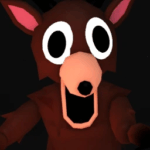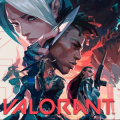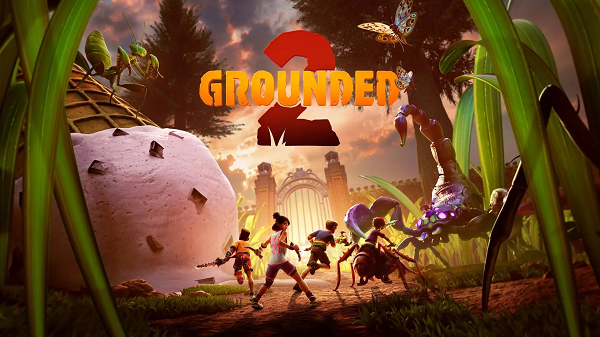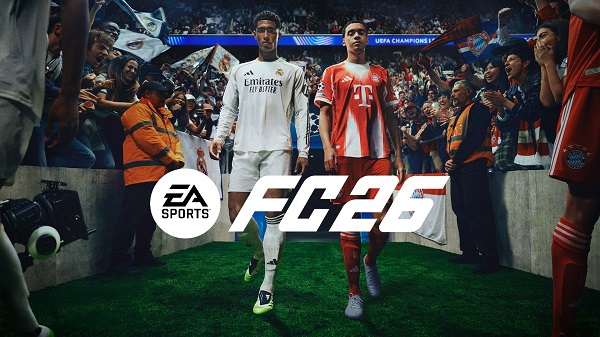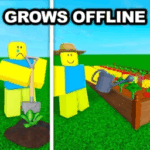Advertisement
Popular Now
Split Fiction, developed by Hazelight Studios and released on March 6, 2025, has been hailed as a landmark in co-op gaming, building on the legacy of It Takes Two with its innovative gameplay and genre-hopping adventure. The game follows Mio and Zoe, two aspiring authors trapped in a machine that brings their sci-fi and fantasy stories to life, forcing them to collaborate to escape. Critics have lauded its inventive mechanics, stunning visuals, and cooperative focus, with reviews averaging a 90 on OpenCritic and 97% positive user reviews on Steam. However, beneath its dazzling surface lies a persistent issue: the struggle to maintain narrative cohesion amidst its ambitious, ever-shifting gameplay. This article delves deeply into how Split Fiction’s narrative fragmentation, driven by its rapid genre transitions and reliance on clichés, impacts the player experience, exploring its implications across the game’s design and reception.
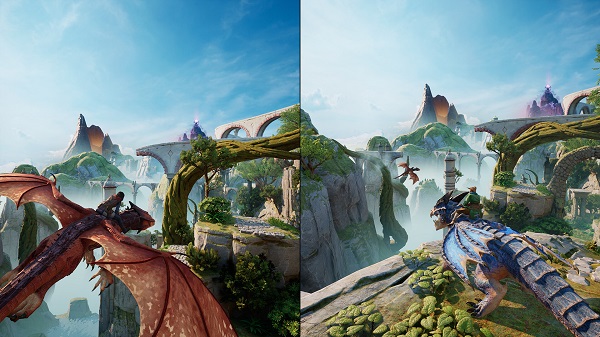 Hazelight’s design philosophy emphasizes cooperative gameplay, with Split Fiction delivering a relentless parade of mechanics—platforming, puzzle-solving, shooting, and transformations. Each chapter introduces new abilities tailored to specific worlds, requiring players to communicate and collaborate. This focus, while a strength, often overshadows the narrative.
Hazelight’s design philosophy emphasizes cooperative gameplay, with Split Fiction delivering a relentless parade of mechanics—platforming, puzzle-solving, shooting, and transformations. Each chapter introduces new abilities tailored to specific worlds, requiring players to communicate and collaborate. This focus, while a strength, often overshadows the narrative.
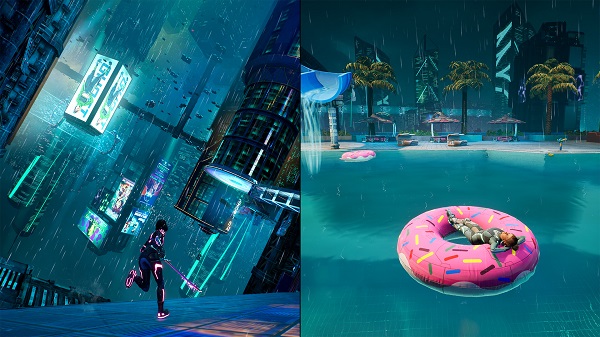 The villain, J.D. Rader, and his corporation represent the game’s critique of AI-driven art theft. However, his role is underdeveloped, weakening the narrative’s thematic impact.
The villain, J.D. Rader, and his corporation represent the game’s critique of AI-driven art theft. However, his role is underdeveloped, weakening the narrative’s thematic impact.
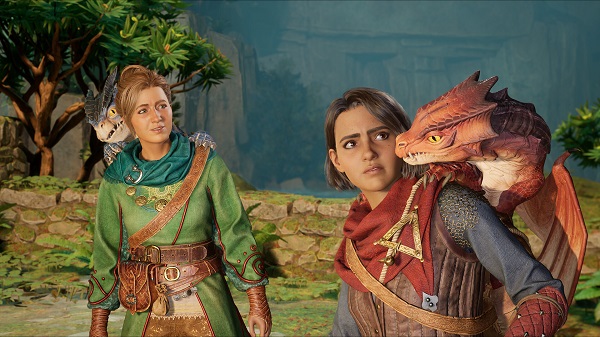 Player feedback, particularly on platforms like Reddit and Steam, reflects a split between those who embrace the gameplay and those frustrated by the story.
Player feedback, particularly on platforms like Reddit and Steam, reflects a split between those who embrace the gameplay and those frustrated by the story.
The Premise: A Narrative Built on Creative Conflict
Split Fiction introduces Mio, a reserved sci-fi writer, and Zoe, an optimistic fantasy author, whose clashing creative visions form the game’s core narrative. The story begins when they are lured to Rader Publishing, where a machine designed to extract their ideas traps them in a virtual reality blending their stories. This setup promises a rich exploration of creativity and collaboration, with the narrative serving as a metaphor for the artistic struggle against exploitative tech.A Promising Start
The opening hours establish a compelling dynamic. Mio’s cynicism contrasts with Zoe’s enthusiasm, setting up a classic odd-couple arc. Their initial disdain for each other’s genres—sci-fi’s gritty realism versus fantasy’s whimsical grandeur—mirrors their personal tensions, creating a foundation for character growth. The narrative hook, where their stories are forcibly merged, is timely, critiquing AI-driven content theft, a theme resonant in 2025’s tech-skeptical climate.Early Cracks in Cohesion
However, the narrative quickly fragments as the game prioritizes gameplay variety over story depth. The rapid shift between Mio’s cyberpunk worlds and Zoe’s fantastical realms, while mechanically thrilling, dilutes the story’s focus. The premise of their merged realities is underutilized, with little exploration of how their creative differences shape the worlds beyond surface aesthetics. This sets the stage for a recurring issue: the narrative feels like a loose framework for gameplay rather than a cohesive tale.Gameplay Over Story: The Core Design Philosophy
 Hazelight’s design philosophy emphasizes cooperative gameplay, with Split Fiction delivering a relentless parade of mechanics—platforming, puzzle-solving, shooting, and transformations. Each chapter introduces new abilities tailored to specific worlds, requiring players to communicate and collaborate. This focus, while a strength, often overshadows the narrative.
Hazelight’s design philosophy emphasizes cooperative gameplay, with Split Fiction delivering a relentless parade of mechanics—platforming, puzzle-solving, shooting, and transformations. Each chapter introduces new abilities tailored to specific worlds, requiring players to communicate and collaborate. This focus, while a strength, often overshadows the narrative.
A Whirlwind of Mechanics
The game’s genre-hopping is its hallmark, with levels inspired by Metroid, Halo, Portal, and Tony Hawk’s Pro Skater. For example, one sequence has players navigating a cyberpunk city as cyber ninjas, while another sees them taming dragons in a Tolkien-esque fantasy world. These shifts are seamless in gameplay, with tight controls and responsive mechanics, but the story struggles to keep pace, often relegated to brief cutscenes.Narrative as an Afterthought
The constant introduction of new mechanics leaves little room for narrative development. Cutscenes are sparse, and dialogue is often expository, serving to justify the next gameplay shift rather than deepen character arcs. For instance, Mio and Zoe’s personal struggles—hinted at through vague references to past losses—are rarely explored in depth, making their emotional beats feel abrupt and unearned. This prioritization of gameplay over story creates a disjointed experience where the narrative feels like a series of disconnected vignettes.The Cliché Trap: Mio and Zoe’s Characterization
Mio and Zoe are archetypes: the brooding sci-fi writer and the bubbly fantasy enthusiast. While this contrast drives the co-op dynamic, their characterization leans heavily on clichés, undermining the narrative’s potential.Stereotypical Beginnings
Mio’s curt demeanor and Zoe’s overly cheerful personality are exaggerated to the point of caricature. Reviews, such as those from Rock Paper Shotgun and Slant Magazine, note that their dialogue often feels trite, with lines like Zoe’s “You have to have faith to leap like that” during a platforming sequence feeling like a nod to Assassin’s Creed rather than authentic character development. This reliance on genre tropes makes them feel less like real writers and more like avatars for gameplay.Missed Opportunities for Depth
The game hints at deeper backstories—Mio’s reserved nature stems from a tragic loss, while Zoe’s optimism masks personal grief—but these are underdeveloped. A late-game revelation about Zoe’s past, described by Press Start as a “narrative gut punch,” is powerful but arrives too late to fully resonate. The lack of consistent interplay between the characters, as noted in a Reddit review, means their growth from rivals to friends feels formulaic, missing the nuanced development seen in It Takes Two’s more intimate story.The Role of Side Stories: A Double-Edged Sword
Split Fiction includes 12 side story portals, brief detours from the main narrative where players explore surreal, experimental scenarios like playing as superpowered pigs or pencil-etched heroes. These are among the game’s most creative moments but further fragment the narrative.Creative Peaks
Side stories allow Hazelight to flex its creativity, unbound by the main plot’s sci-fi/fantasy dichotomy. For example, the “pig level” combines dark humor with a commentary on meat production, while a drawing-themed mission evokes Okami’s art style. Critics, like those at Empire, praise these for their “frenetic bursts of wildly imaginative scenarios,” but their disconnection from the main story can feel jarring.Narrative Disruption
While fun, side stories often interrupt the main narrative’s momentum. A Reddit user noted that their abrupt placement, especially after Chapter 5, feels like a distraction from Mio and Zoe’s journey. These diversions, while mechanically inventive, rarely tie back to the characters’ growth or the overarching theme of creativity versus corporate exploitation, leaving players with a sense of narrative whiplash.The Antagonist Problem: Rader’s Underwhelming Presence
 The villain, J.D. Rader, and his corporation represent the game’s critique of AI-driven art theft. However, his role is underdeveloped, weakening the narrative’s thematic impact.
The villain, J.D. Rader, and his corporation represent the game’s critique of AI-driven art theft. However, his role is underdeveloped, weakening the narrative’s thematic impact.
A Promising Villain
Rader’s introduction as a tech mogul stealing creative ideas is compelling, especially in 2025’s AI-skeptical climate. His machine, which merges Mio and Zoe’s stories, sets up a potent metaphor for the commodification of art. Early cutscenes hint at a menacing presence, with Rader’s sleek, Silicon Valley-esque aesthetic contrasting the protagonists’ organic creativity.Lack of Depth
Unfortunately, Rader remains a one-dimensional antagonist. Reviews, such as Digital Trends, describe him as “cheesy” and “heavy-handed,” with minimal screen time and predictable motivations. His absence for much of the game reduces the stakes, making the final confrontation—while mechanically spectacular—feel narratively hollow. A stronger antagonist could have tied the genre-hopping worlds together, providing a cohesive thread.Pacing Issues: The Cost of Relentless Variety
The game’s 12–15-hour runtime is packed with constant gameplay shifts, but this breakneck pace disrupts narrative flow, leaving players little time to connect with the story.Early Overload
The first few chapters overwhelm players with rapid genre switches, from cyberpunk chases to fantasy dragon-riding. While exciting, this pace leaves little room for character development. GameSpot notes that the “rapid pace” of mechanics introduction outstrips It Takes Two, but the story struggles to match this energy, with early sci-fi levels feeling like “sizzle with no steak.”Late-Game Redemption
The narrative gains traction in later chapters, particularly in a moving scene involving Zoe’s backstory. However, the rushed pacing means these moments feel abrupt. A Reddit user complained that the story “starts slow but hits like a Mack truck” at the end, suggesting that better pacing could have made emotional beats more impactful. Slowing down to explore key moments could have strengthened cohesion.Technical Brilliance vs. Narrative Shortfalls
Split Fiction’s technical achievements—smooth 60 FPS performance, stunning visuals, and seamless split-screen co-op—are undeniable, but they highlight the narrative’s shortcomings.Visual and Mechanical Mastery
The game’s art direction, from neon-soaked cyberpunk cities to lush fantasy landscapes, is consistently praised. GameSpot highlights its “vast, gorgeous, and varied” environments, while Gaming Nexus lauds the “flawless” performance. These technical strengths make the narrative’s weaknesses more noticeable, as the game’s polish contrasts with its unpolished story.The Cost of Ambition
Hazelight’s ambition to cram countless ideas into a single game, as noted by PC Gamer, results in a narrative that feels stretched thin. The focus on delivering “a game of moments” sacrifices a unified story, with reviewers like mxdwn Games noting that some mechanics disappear before they can be fully explored, mirroring the narrative’s lack of depth.Player Reception: A Divided Response
 Player feedback, particularly on platforms like Reddit and Steam, reflects a split between those who embrace the gameplay and those frustrated by the story.
Player feedback, particularly on platforms like Reddit and Steam, reflects a split between those who embrace the gameplay and those frustrated by the story.
Praise for Gameplay
Steam reviews, with 97% positive ratings from 52,824 users, celebrate the game’s cooperative fun and inventive mechanics. Posts on r/gaming call it “the best co-op game I’ve ever played,” emphasizing moments like the CAPTCHA chase sequence. This enthusiasm underscores the game’s success as a gameplay-driven experience.Criticism of Story
Conversely, some players, like a r/SplitFiction user giving the game a 7.5/10, criticize the “cliché” and “forced” story. Complaints focus on Zoe’s “annoying” dialogue and the predictable arc of enemies becoming friends. These critiques highlight a disconnect between players expecting a deeper narrative and the game’s focus on gameplay spectacle.The Cultural Context: AI and Creativity
Split Fiction’s narrative, while flawed, resonates in 2025’s cultural landscape, where debates about AI’s impact on art are rampant. The game’s critique of Rader’s machine mirrors real-world concerns about generative AI.A Timely Theme
The game’s premise, as AIPT notes, reflects “the battle so many artists, musicians, and writers face” against AI-driven content creation. This theme could have been a narrative anchor, tying together the genre shifts and character arcs. Instead, it’s underdeveloped, with Rader’s role as a stand-in for tech greed feeling superficial.Missed Potential
A stronger focus on this theme could have elevated the narrative. For example, exploring how Mio and Zoe’s creative processes are affected by their entrapment could have added depth, making their journey a commentary on artistic integrity. Instead, the theme is overshadowed by gameplay, leaving players with a sense of unfulfilled potential.Solutions for Narrative Cohesion
To address Split Fiction’s narrative issues, Hazelight could consider several approaches in future titles or updates:- Deeper Character Interplay: Increase dialogue and interactions between Mio and Zoe to develop their relationship organically.
- Thematic Integration: Tie side stories and gameplay mechanics more closely to the central theme of creativity versus exploitation.
- Stronger Antagonist: Flesh out Rader’s role to provide a unifying narrative thread across worlds.
- Balanced Pacing: Slow down key narrative moments to allow emotional beats to resonate.
- Reduced Reliance on Clichés: Craft more nuanced character arcs, avoiding stereotypical tropes.
